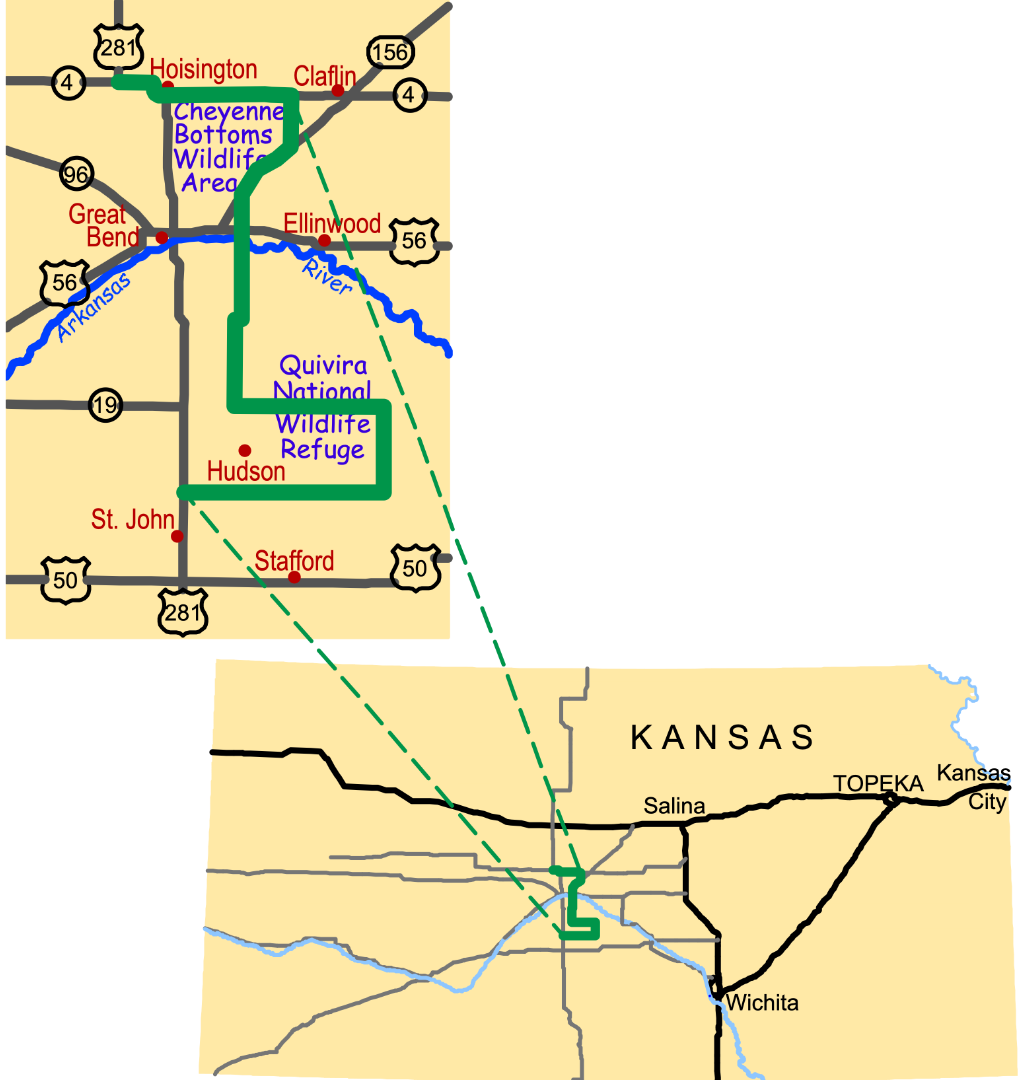Working...

Birds of the Wetlands and Water
Musicians of the Marsh
Honk! Quack! Cackle! Squawk! Tune your ears to the wetland symphony, resounding testament to the astonishing number and diversity of birds in these marshes. Herons, egrets, rails, cranes, ducks, geese, pelicans, gulls, terns, and shorebirds live in and migrate through the Byway's wetlands by the millions.
Many of these wetland birds remain hidden in the dense marsh foliage. Listen for the rolling trill of the marsh wren, the descending whinny of the sora, and the deep pumping "oong-ka-choonk" of the American bittern (also known as the "thunder-pumper").
While most wetland birds here are seasonal, a number remain through the summer. Snowy plover*, blue-winged teal, least tern**, white-faced ibis, king rail, and many others nest here. Others, like the Canada goose, are year-round residents. In truth, there is no day along the Byway without the sounds of wetland birds.
Whooping Crane
In 1941, just 21 whooping cranes remained in the wild. By 2007, the population had rebounded to almost 350. Most migrate between Canada and the Gulf coast of Texas, and Byway wetlands are among the few places where you consistently see this majestic bird during migration.
Franklin's Gull
After nesting in the northern Great Plains, Franklin's gulls undertake an astounding migration. They fly to the Texas coast and continue to Mexico's Isthmus of Tehuantepec. From there, they fly overland to the Pacific coast, which they follow to southern Peru and northern Chile.
Motion and Change
Consider the American golden-plover, able to fly more than 3,000 miles without a pause. Or the piping plover, which navigates through our wetlands to the same Texas beach each year. Whatever the mystery or magic, Byway wetlands offer the perfect place to contemplate this miracle of motion.
Download the interpretive panel: Birds of the Wetlands and Water Panel located at the Quivira Scenic Overlook on NE 140th St.
To listen to more information click on the Audio Tour
Go to the Gallery to view photographs contributed by visitors to the Byway.
* Snowy Plover
Quivira National Wildlife Refuge offers great opportunities to see this uncommon shorebird. Unlike many of the shorebirds that migrate through Byway wetlands, many snowy plovers remain here to nest. Watch for them along the Wildlife Drive around Quivira's Big Salt Marsh at Quivira National Wildlife Refuge, where they nest along the roadways or on nearby salt flats in late spring. Though the snowy plover blends well with its surroundings, you'll see it darting across the salt flats as it forages for invertebrates.
Believe it or not, young snowy plovers are able to leave their nest within three hours of hatching. They walk, run, and swim well and forage on their own, but will return to the parent for brooding for many days after hatching.
** Least Tern
The salt flats around Quivira's Big Salt Mash are also critical to the least tern, a federally listed endangered species. One big reason least terns are endangered is the loss of their breeding habitat on unvegetated beaches and sandbars in rivers. Historically, spring floods kept these areas clear of vegetation. As people controlled that flooding, vegetation encroached on beaches and sandbars, forcing out the least terns.
To prevent damage to least tern nest sites by flooding, managers at Quivira, with the help of volunteers, constructed small mounds of rock and gravel as nest platforms to elevate the nests above the level of most flooding. You can see these small mounds on the flats north of the Big Salt Marsh Wildlife Drive.
More Birds and Wildlife pages...
Birds of the Woods and Prairie
Wings Over the Water
Home on the Range
Jackrabbit Run
Magic Muck
Prey and Play



